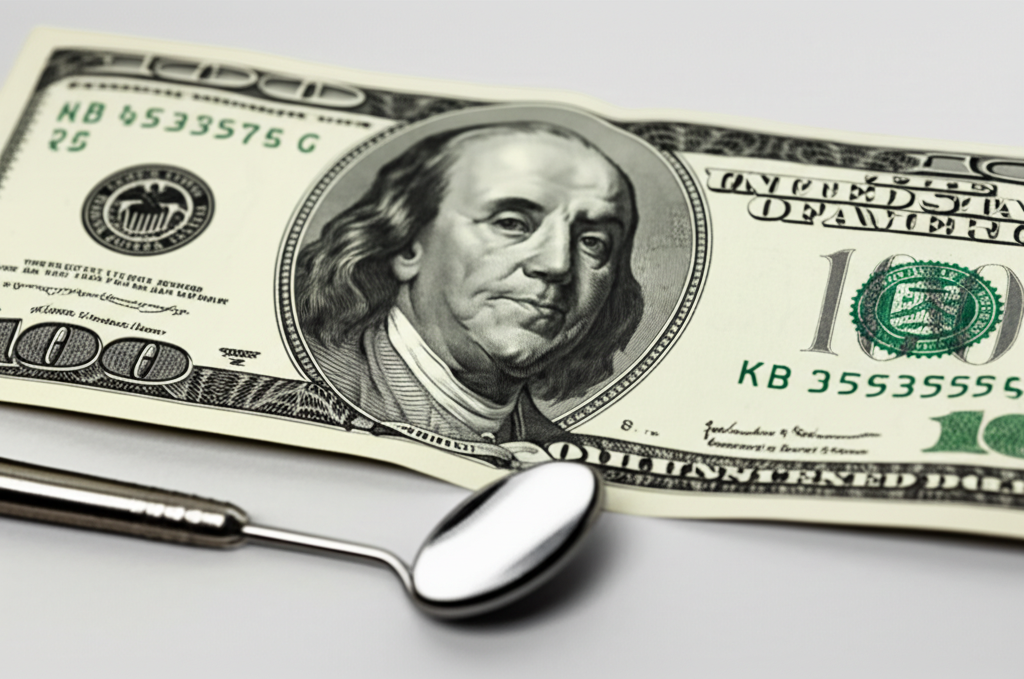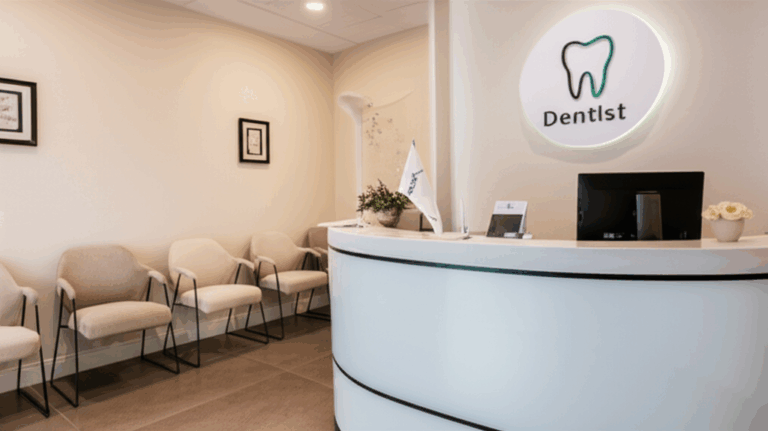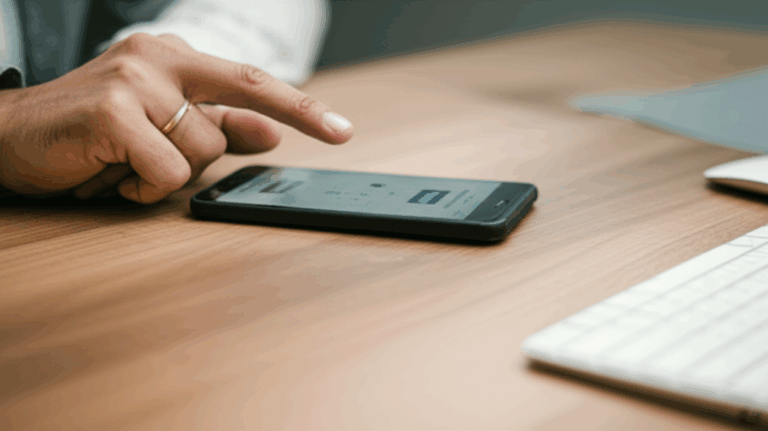
How Much Does It Cost To Open a Dental Clinic? My Complete 2024 Budget Guide
Table of Contents
- Real Estate & Build-Out: The First Big Hurdle
- Essential Dental Equipment & Technology
- Initial Supplies & Inventory
- Staffing & Initial Payroll
- Marketing, Branding & Grand Opening
- Legal, Accounting & Professional Services
- Insurance Coverage
- Working Capital & Contingency Fund
- SBA Loans
- Conventional Bank Loans
- Equipment Financing and Leasing
- Personal Savings, Private Investors & Equity Partners
Introduction: My Journey With Dental Practice Startup Costs
If you’ve ever wondered, “How much does it cost to open a dental clinic?”—I get you. I asked this question so many times. When I first thought about opening my own place, the numbers felt like a guessing game. Every dentist I knew had a different answer. My accountant’s guess? Higher than I wanted. The equipment sales rep? Way lower, as long as I bought everything from them.
Here’s what I found out: It really depends. That answer didn’t help me when I needed to plan and get a loan, though. So I put together this straight-up, real-world guide based on what I learned, all my hours reading dental business books, talking to brokers, and meeting with owners who’d already done it.
Whether you want to start fresh (a new, “de novo” office) or buy one that’s already running, knowing the main costs, things people forget, and how much cash you’ll really need is your best friend. Opening your dream dental office and being ready for every bill—that’s a great feeling.
De Novo Dental Practice – What Does It REALLY Cost?
Let’s get into the real details. Starting from zero (what people call “de novo”) is a big job. You get lots of surprises, choices, and that moment when the bill is bigger than you thought. Here’s every part explained just how I wish someone explained to me at the start.
Real Estate & Build-Out: The First Big Hurdle
Finding the space: By far, the priciest thing for most will be your clinic space. Do you buy? Rent? Build up an empty spot, or fix up a place someone already used? I rented a plain “shell” space in a good area. It cost me about $160,000 to get it ready inside, but some dentists spend even more.
Where the money goes:
- Build out: Plumbing, electric work, walls, counters, floors—everything needed to turn a plain room into a dental office.
- Blueprints and contractors: A good dental designer costs real money, but will save you from money mistakes later.
- Permits and paperwork: Every city, county, and state needs forms and fees. Budget a few thousand dollars here.
My tip: This part takes longer than you expect. Approvals, inspections, and last-minute changes can eat up your backup cash fast.
Typical Costs (2024 averages):
- Build-out: $150,000–$450,000+
- Designer/contractor: $15,000–$60,000
- Permits/paperwork: $2,000–$12,000
Total for this part: Plan for at least $167,000–$522,000+ to just make the inside ready.
Essential Dental Equipment & Technology
Now comes the fun (and the sticker shock).
Big items:
- Dental chairs and treatment units: If you want 3-5 rooms, budget $35,000–$90,000
- X-ray machines: Digital X-rays, “pan” machines, or CBCT if you want to go all-in can be $25,000–$120,000
- Sterilization area: Don’t try to save here—rules are strict. About $12,000–$35,000.
- Compressor, suction, IT: Must-have stuff. I planned $50,000 here and probably needed more.
Nice extras (if you can):
- Digital scanners, cameras, and advanced software, especially if you do cases with a digital dental lab.
Price Ranges:
- Handpieces and small gear: $15,000–$50,000
- Computers and software: $10,000–$40,000
- Furniture: $10,000–$40,000
Total for this part: Plan on $120,000–$400,000+ for a regular, modern dental setup.
Initial Supplies & Inventory
Think of this as your startup pack: gloves, masks, impression stuff, cleaning pouches, medicine, office paper, and basic things for your patients (TV for the waiting room?).
- Supplies: $10,000–$30,000
- Also count medicine, an emergency kit, and anything you order from a dental ceramics lab if you make crowns.
Tip: Don’t order too much. Better to run out and reorder than watch things expire.
Staffing & Initial Payroll
This is where lots of new owners (me included) try to save—only to pay for it with stress later. Even if you’re not super busy at first, you need:
- Someone at the desk (office manager)
- At least one helper/assistant
- One hygienist (maybe part-time in the beginning)
You’ll need to pay for about 3-6 months of pay before you’re really busy:
- Staff cost: $45,000–$150,000, depending on where you live and your team
Don’t forget payroll taxes and maybe paying someone to help find good workers.
Marketing, Branding & Grand Opening
I used to think, “If I open, people will just come.” Not true! Today a good website and smart marketing matter as much as your tools.
You’ll want:
- Website, search engine stuff, local business listings
- Logo, signs, and things to hand out
- Grand opening: A little party can help you get those first patients.
Budget:
- $5,000–$30,000 to spread the word and get people booked.
For special cosmetic jobs, you might show before/after with help from a crown and bridge lab.
Legal, Accounting & Professional Services
Don’t try to do your legal forms by yourself—trust me. Hire a lawyer who helps dentists, and a CPA who knows dental offices. If this is your first time, a business coach for dentists helps a ton.
- Legal, accounting, and advice: $10,000–$40,000
Don’t forget business registration and state things you have to file.
Insurance Coverage
Never skip on this. You’ll need:
- Liability insurance
- Building insurance
- Business interruption insurance
Yearly cost: $5,000–$20,000
It might sound dull, but one lawsuit can ruin everything.
Working Capital & Contingency Fund
You’ll be excited to open, but the first 3-6 months are tough. You need cash to pay bills and rent while patient numbers grow. Lenders call this “working capital.” I had a special backup fund for surprise costs—because they always pop up.
- Working cash for 3-6 months: $25,000–$75,000 extra
Summary Table: My Actual Outlay
| Category | Low-End Cost | High-End Cost |
|---|---|---|
| Real Estate & Build-Out | $167,000 | $522,000+ |
| Equipment & Technology | $120,000 | $400,000+ |
| Operating Expenses | $86,000 | $338,000+ |
| Contingency Fund | $25,000 | $75,000 |
| TOTAL | $398,000 | $1,335,000+ |
For me: I ended up right in the middle, around $675,000 before my first patient ever paid.
Buying an Existing Practice vs. Starting Fresh
I almost bought a running office. It’s a totally different road, with its own pluses and problems.
Upsides of buying:
- Patients right away mean money starts flowing sooner.
- Staff and how things work are already set up.
- Sometimes there’s a good deal, especially from someone retiring.
Problems:
- You might get stuck with old equipment, ugly décor, or slow systems.
- You could pay for “goodwill” but patients leave anyway.
- Needs lots of careful checking—the numbers, what’s in stock, the lease.
Normal cost: Most offices sell for 60%–85% of their past year’s income. If the office made $1 million, expect to pay at least $600,000 (maybe $250,000 in smaller towns, and $1–1.2 million in busy cities).
Is it cheaper? Sometimes, yes. But sometimes not, especially once you fix up old stuff. Some end up costing about the same as starting brand-new.
Financing Your Dental Clinic: What Worked For Me
Unless you have a lot saved up, you’ll need some kind of loan (like I did). Here’s what I tried:
SBA Loans
The Small Business Administration makes it easier for new dental offices to get loans in the U.S. Why? Lower down payments (sometimes only 10-15%), longer times to pay back (so the payments are lower), and steady interest rates.
- SBA 7(a) and 504 loans are most used.
- You’ll need a solid plan, financial info, and a good credit score.
- The forms are a lot, but that “yes” is the best feeling.
Conventional Bank Loans
Big banks have special groups for dental offices. They’re handy, but will want a bigger down payment, a higher credit score, and a solid guess of what you’ll earn.
Not sure which way to go? Ask your CPA or a dental office finder for help.
Equipment Financing and Leasing
Don’t want to pay $100,000 upfront for equipment? Equipment loans or leasing are out there. Sometimes you don’t pay anything now.
Hint: Some supplier deals are just as good. When I wanted digital stuff, I checked out Henry Schein and Patterson. And some digital labs even offer helping pay if you partner with a 3d dental lab.
Personal Savings, Private Investors & Equity Partners
Or, use your savings, or get a partner to put up cash (they’ll want a piece of the profits). More risk for you, but you get all the gains (and losses).
Major Factors That Move the Needle on Total Cost
No two offices are the same. From my own try and hearing lots of owners, here’s what really matters:
- Location: Clinics in cities or busy areas cost way more for space and build-out than quiet or small-town spots.
- How big your office is: A one-room spot is cheaper than a five-room, full family clinic.
- What you do: Basic checkups need less gear than surgery, braces, or high-end cosmetic work.
- New or used gear: New tech costs more, but can last and help more.
- Blank room vs. re-using an old dental office: Making a plain room work is pricey. Fixing up a used dental room is sometimes cheaper.
- High or low tech: Offices with digital X-rays, 3D printers, or same-day crowns pay more at the start, but might earn more later.
My Favorite Ways to Save on Startup Costs
Some tips that really saved my wallet:
- Start small: Build just 2-3 rooms and grow later. You can save 30% or more this way.
- Lease fancy gear: Instead of spending $40,000+ on a CBCT, rent one until you’re sure you need it.
- Buy used equipment: Some clinics sell barely-used gear. I got a like-new sterilizer at half price from a friend moving to a specialty zirconia lab.
- Bargain everything: Everyone expects deals—get different prices and don’t be scared to walk away.
- Do what you can yourself: Make your own website or run your first social media pages to keep costs down.
- Ask for help from vendors: Supply companies have starter deals, cheap loans, and even advice.
- Trust your buddies: Other dentists can send you to good tech people and helpers for a fair price.
Building a Realistic and Robust Financial Plan
This sounds boring, but it’s super important. If I could talk to my old self before opening, I’d say one thing: “Make a real list of every cost, guess your income each month, and plan cash for at least six months.”
What should be in your plan?
- List of startup costs: Every single thing, from building to coffee for patients.
- Earning guesses: Careful, medium, and hopeful patient numbers by month.
- Monthly bills: Rent, basics, staff, insurance, and marketing. Don’t under-estimate, bills are always more than you think.
- Cash plan: Make sure you don’t run out of money before you’re busy enough to pay yourself.
- Break-even point: How many patients or treatments to cover the bills.
Need a template? Your bank might share one, or you can start with basic numbers from practice guides.
So, Is It Worth It? My Honest Conclusion
Looking back on the time, cash, and work I put into opening, I’m still shocked by how much I learned—and that I’d do it again.
Here’s my take:
- Opening a new office takes real money—most new ones are between $400,000 and $750,000 (2024 numbers). Some cost more, depending on what you want and where you are.
- There are surprises, but with good planning, you can manage it—and smart spending turns into more profit and a better life.
- With steady money control and good marketing, most U.S. owner dentists break even in 1–2 years and can end up making six-figure incomes.
My advice: Ask lots of owners, pay for help in weak spots, keep your plan flexible, and know that your office will change over time.
Opening my place was the hardest and best thing I’ve done. I hope my story and tips help you move forward with a clear mind and confidence. Maybe I’ll see your name on a clinic door soon.
Want more real-world tips and dental lab solutions?
- See how a removable denture lab can power up your services.
- Learn about new digital workflows from a top digital dental lab.
- If you have questions, just ask. I’ve been there—and I want you to win.








